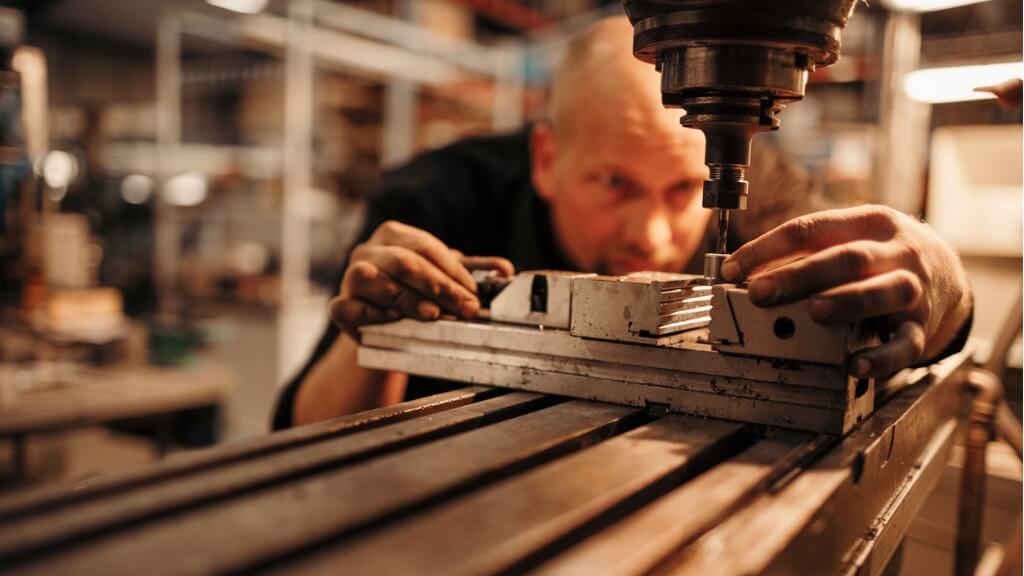Dan Casey from UK-based manufacturing business Penny Hydraulics gives his advice to help you future-proof your company.
How To Future-Proof Your Manufacturing Business
Dan Casey from UK-based manufacturing business Penny Hydraulics gives his advice to help you future-proof your company.

At some point, every manufacturing business will have to react to changes in their sector. Plus, with the issue of Brexit looming over the UK, the manufacturing industry is as fragile as it’s ever been.
To protect the future of your business in such uncertain times, I’ll be giving you my best advice on how to adapt and react to any changes that affect your work.
Review your trading relationships
If we leave the single market due to Brexit, it’s almost certain that trading relationships will change. Most of the UK’s commercial prices are based on the country’s ability to trade freely within the EU but, if we no longer have free trade, the cost of materials and transport could be inflated.
This means you could end up paying much higher tariffs on goods you get from the EU, as well as those you export to the Union.
As goods coming from outside the UK will cost us more, it’s worth looking for British-based suppliers ahead of time. Not only will this make things cheaper for you but, if some deals do break down because of Brexit, you’ll have back-up deals within the UK that will allow you to continue with your work.
Stick to new laws and legislature
It’s important to stay up to date with new laws and legislature, and this has become even more important around the time of Brexit. One of the easiest ways you can keep updated is by signing up for newsletters from regulatory bodies.
They will inform you of any new regulations surrounding the manufacturing industry, as well as outline what the requirements are and how long you have to prepare before they take effect. You should then make sure that all of your staff and customers are aware of the new regulations that have been put in place and how they can affect the business.
Be as sustainable as possible
More and more people are becoming concerned about the welfare of our planet, so many companies are making a conscious effort to be more sustainable.
And, as the world moves away from using unsustainable sources and materials, staying up to date with the changes can help to keep your products in demand.
In fact, 68% of consumers consider sustainability to be an important factor when buying a product, and 38% of consumers are willing to pay at least 25% more than the original price for products that are sustainable (CGS).
Try to source more eco-friendly materials from local areas and sustainable foundations. For example, you can source wood from nearby plantations that are certified by the Forest Stewardship Council (FSC) or the Programme for the Endorsement of Forest Certification (PEFC).
You should also try to invest in more energy-efficient and environmentally friendly vehicles and machines. Electric alternatives to fuel-based machinery are better for the planet and could save you more money in the long run.
Keep up with new technology
Technology is moving faster than ever before, and you need to be keeping up with those changes to ensure a future for your business. This means you’ll need to stay in line with new design and manufacturing techniques.
For example, using 3D Computer Aided Design (CAD) software can help customers create the exact product they want on screen, without relying on basic 2D drawings.
These technologies can help you tailor your business to your customers, and your updated processes will help to maintain their satisfaction and loyalty.
There are also new technologies that can help to manage your supply chain more efficiently.
For example, cross-reality can be used to layer reality with computerised data using headsets, giving you tailored information that allows you to pick, pack, and transport your goods more quickly and with fewer mistakes.
It’s important that you keep up with these technologies as they become more popular to avoid losing custom to faster, more efficient competitors.
Our admin processes could also be updated through the use of data clouds. This requires you to move your internal data over to an internet-based software system. These systems are password protected, meaning only those with authorised access can retrieve the data.
With more traditional technology, if there was ever a data breach — whether that’s through hackers or stolen laptops — your important data can be stolen, too.
With an internet-based server, your data is stored externally, which means it’s typically harder for those outside of the company to gain access to it. And, if they do, you can easily log in and delete or move the confidential information before any serious damage can be caused.
Review your competitors
If you’re not offering anything better than your competitors, either through your products or your customer service, you’ll run the risk of losing your custom. You should be checking up on your competitors regularly to see how you compare.
See what they’re doing right and what’s attracting their customers. Then, look at how you can do it even better. Finding your unique selling point can help you stand out from the crowd.
So, it could be that you have a large focus on sustainability, or you offer a quicker service. You just need to be able to show people why you deserve their orders more than your competitors do.
Maintain your customer relationships
Without your customers, there’d be no business, so maintaining your relationships with them is hugely important. This is all about keeping your customers happy to avoid them turning to a competitor, so research what they want from your products and alter them to suit their needs.
It can be as simple as asking your target demographic what problems they’re facing in their work using social media or surveys. Based on your results, you can then start designing products that will help.
This way, you won’t be wasting money on processes that aren’t relevant to your customer base and you can spend more on the things they actually want.
Dan Casey is marketing manager at Penny Hydraulics.
Thanks for signing up to Minutehack alerts.
Brilliant editorials heading your way soon.
Okay, Thanks!

